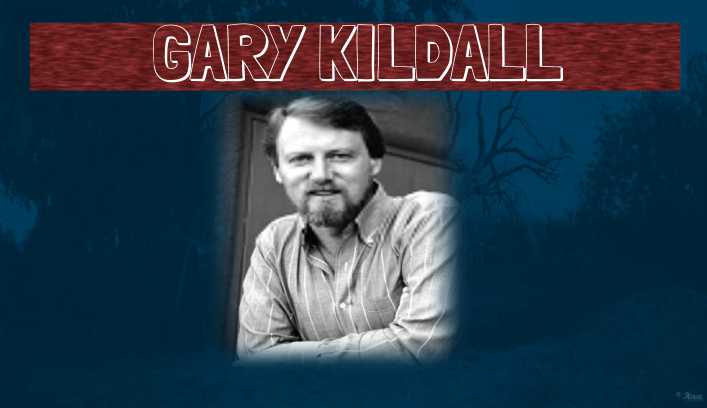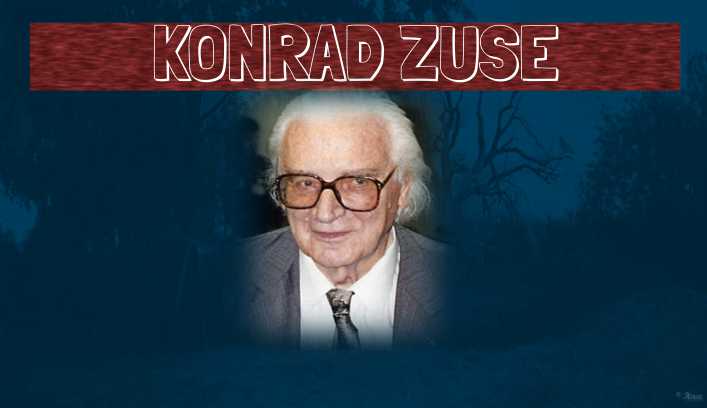
Gary Arlen Kildall was born in 1942. He was an American computer scientist and microcomputer entrepreneur.
He created the CP / M operating system and founded Digital Research Inc.

Kildall was one of the first people to see microprocessors as whole computers, more than a controller, and he organized a firm around this concept.He also had a TV show Computer Chronicles. He was in computer waters for 20 years but is best remembered for his failed 1980 attempt to license CP / M for IBM Personal Computer.
Gary was born in Seattle, Washington. He became a professor of mathematics but was also interested in computer technology.
He first heard about the INTEL 4004 commercial microprocessor. He bought it and started experimenting with it, writing programs for it.
He completed his doctorate in computer science in 1972.
In 1973, Intel lent him systems using 8008 and 8080 processors. He made the first programming language for PLM microprocessors.
In the same year, he made the legendary CP / M and thus enabled the 8080 to control the floppy drive.
He demonstrated CPM intel, but intel was not interested in CP / M and opted for PLM.

The Kildale woman founded Intergalactic Digital Research, which later changed its name to Digital Research, Inc.,to expand CPM through magazines and advertisements. Digital Research licensed CP / M for IMSAI 8080, a popular clone of theALTAIR 8800. Thus, CP / M became the standard and supported a large number of hardware.
In response, Kildall pioneered BIOS, a set of small programs housed in computer hardware
(ROM or EPROM chip) that allowed CP / M to be started for various systems without modifications.
His biggest fiasco was when, at Bill Gates’ suggestion, the IBM president contacted Digital Research
to negotiate a new version of CP / M, called CP / M -86 for the IBM PC.
Kildall left the negotiations to his wife, as always while he and his colleague were on business leave.Before IBM explained the reason for its visit, they asked Kildall’s wife to sign a non-disclosure agreement (NDA).
On the advice of the lawyer, the woman did not sign it and said that she could not sign anything until Kildall returned.
Kildall returned in the afternoon but then everything was late and the deal was not done.
Nobody knows exactly what happened there.
An IBM negotiator told Bill Gates to find him any operating system and he recommended 86-DOS,an independent operating system based on Kindall’s CP / M. That dos was adapted for IBM hardware and was called IBM PC DOS.
Kildall bought that do and researched it and noticed that it was based on CP / M.
He wanted to sue them but was told that the intellectual property law was not exactly the purest for anyone to sue.
Instead, Kildall threatened IBM with a lawsuit and IBM responded by proposing to offer the CP / M-86 as an option for the PC in exchange for a discharge.Kildall accepted that because he did not expect any commercial success of the IBM.
When the IBM PC was introduced, IBM sold the operating system as an integral option.One of the operating systems was PC DOS for $ 40. PC DOS was almost a binding option.
The CP / M-86 was released a few months later at a six times higher price and of course experienced a total sales catastrophe compared to PC DOS.
Because of the loss with IBM. Kildall and his wife were under heavy pressure.
He has worked on many projects, as well as a version of CP / M in multitasking with the implementation of the Logo programming language.
He thought it would go well, but unfortunately it didn’t go well.
Kildall resigned as CEO of Digital Research on June 28, 1985, but remained a member.
1984 launched another company, Activenture, which adapted the optical drive for computer use.
In 1985, he published the encyclopedia on CD-ROM.
On July 8, 1994, Kildall fell in a biker bar and hit his head. He has been an alcoholic in recent years.
There is no exact information about what happened when he fell from a chair in the bar.
It is possible that he was attacked because he was not dressed properly for that bar but was wearing a Harley Davidson suit.
He was checked twice in the hospital and died on the third day.
An autopsy did not determine the cause of death.
The CP / M Usenet FAQ says he died of a heart attack after the fall.
This further complicates the story and to this day the true cause of his death is unknown.



